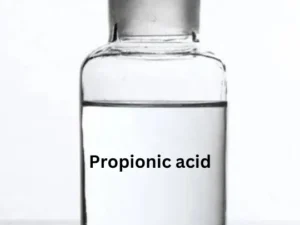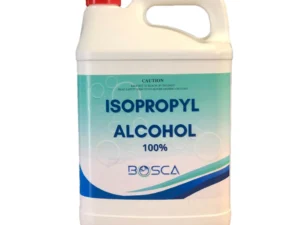Description
Adipic Acid: A Versatile Building Block for Polymers and Beyond
Adipic acid is a dicarboxylic acid, a colorless crystalline solid, and a vital chemical intermediate with wide-ranging applications. While most recognizable as a key component in the production of nylon, adipic acid finds use in diverse industries, from food and pharmaceuticals to lubricants and polyurethane production. Its versatility stems from its unique combination of chemical properties, making it a crucial building block for a variety of products we use daily.
The Backbone of Nylon:
The most significant application of adipic acid lies in the production of nylon 6,6. This robust synthetic polymer is renowned for its strength, elasticity, and resistance to abrasion. Adipic acid reacts with hexamethylenediamine to form a salt, which is then polymerized to create the long chains of nylon. Nylon 6,6 finds widespread use in textiles, carpets, tire reinforcement, automotive components, and engineering plastics. The strength and durability of nylon are directly linked to the properties of adipic acid, highlighting its critical role in this widely used material.
Beyond Nylon: Diverse Applications:
While nylon dominates its usage, adipic acid contributes to numerous other industries:
- Polyurethanes: Adipic acid is used as a component in the production of polyurethanes, which are employed in foams, coatings, adhesives, and elastomers. Its inclusion in these polymers imparts flexibility and hydrolytic stability.
- Plasticizers: Adipic acid esters, such as dioctyl adipate (DOA), are used as plasticizers in PVC (polyvinyl chloride) plastics. These additives enhance the flexibility and workability of PVC, making it suitable for applications like films, sheets, and tubing.
- Food Additives: In the food industry, adipic acid functions as a food additive, primarily as a buffering agent, a flavor enhancer, and a gelling aid. It can be found in gelatin desserts, artificial sweeteners, and other processed foods.
- Pharmaceuticals: Adipic acid is used as an excipient – an inactive ingredient – in pharmaceutical formulations. It can contribute to the stability, disintegration, and taste-masking of medications.
- Lubricants: Certain adipic acid esters are used as synthetic lubricants, particularly in applications requiring low-temperature performance and oxidative stability. They offer advantages over mineral oil-based lubricants in specific scenarios.
Manufacturing and Environmental Considerations:
Adipic acid is typically manufactured through a two-step process involving the oxidation of cyclohexane. Cyclohexane is first oxidized to a mixture of cyclohexanol and cyclohexanone, which is then further oxidized to adipic acid using nitric acid. While this process is well-established, it historically generated nitrous oxide (N2O), a potent greenhouse gas, as a byproduct.
Significant advancements have been made in recent years to mitigate the environmental impact of adipic acid production. Methods such as catalytic decomposition and thermal destruction are now widely employed to convert N2O into less harmful substances. Furthermore, research is focused on developing alternative production routes using renewable feedstocks and greener oxidation methods to enhance the sustainability of adipic acid manufacturing.
The Future of Adipic Acid:
As demand for high-performance materials and sustainable solutions continues to grow, the future of adipic acid looks promising. Ongoing research and development efforts are focused on:
- Sustainable Production: Developing bio-based production routes using renewable resources like sugars and biomass as feedstocks.
- Improved Catalysis: Enhancing the efficiency and selectivity of catalytic oxidation processes to minimize waste and energy consumption.
- New Applications: Exploring novel applications for adipic acid in areas such as bioplastics, advanced coatings, and energy storage.
Conclusion:
Adipic acid is a versatile and essential chemical intermediate with a long history and a bright future. Its role as the key building block of nylon remains dominant, but its diverse applications in polyurethanes, plasticizers, food, and pharmaceuticals solidify its importance across various industries. By addressing the environmental challenges associated with its production and exploring new, sustainable manufacturing methods, adipic acid will continue to play a vital role in shaping the materials and products of tomorrow.



















Reviews
There are no reviews yet.